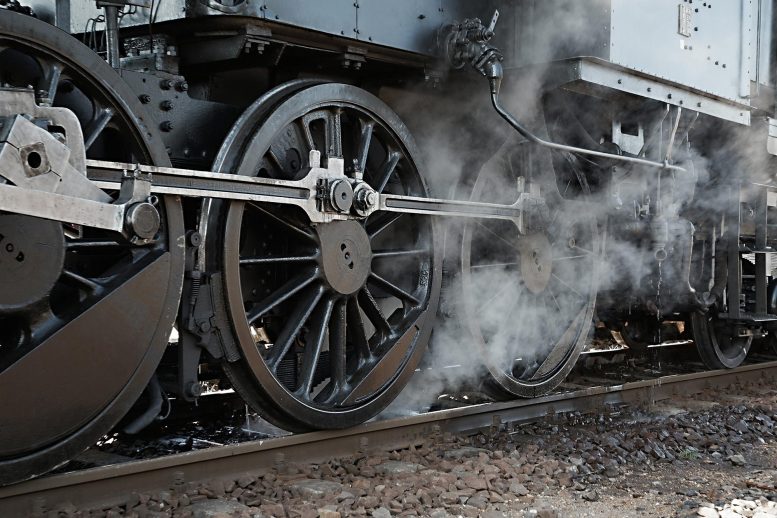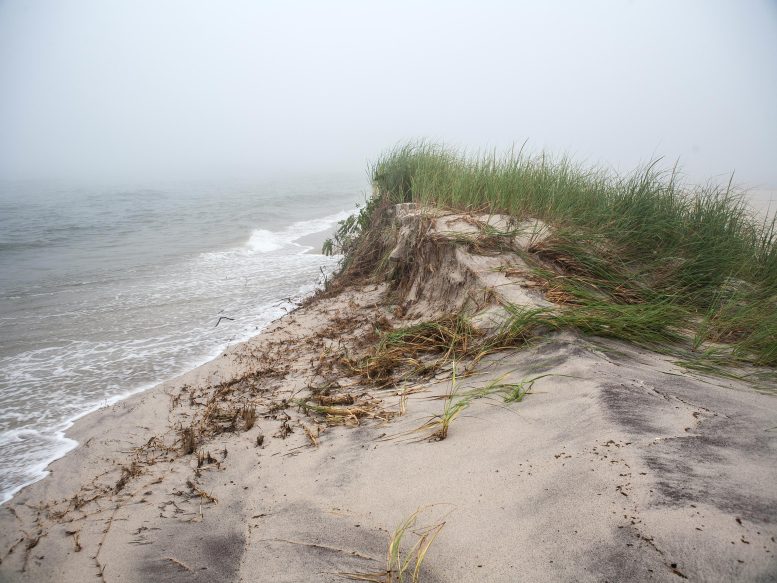
Modern sea level rise rates started in 1863, coinciding with the Industrial Age’s intensification, early ocean warming, and glacier melt.
An international team of scientists including Rutgers researchers has found that modern rates of sea level rise began emerging in 1863 as the Industrial Age intensified, coinciding with evidence for early ocean warming and glacier melt.
The study, which used a global database of sea-level records spanning the last 2,000 years, will help local and regional planners prepare for future sea-level rise. The study appears in the journal Nature Communications.
Sea-level rise is an important indicator of broader climate changes. By identifying the time when modern rates of sea-level rise emerged above natural variability, the researchers were able to pinpoint the onset of a significant period of climate change.
By examining the worldwide records, the researchers found that globally, the onset of modern rates of sea-level rise occurred in 1863, in line with the Industrial Revolution. At individual sites in the United States, modern rates emerged earliest in the mid-Atlantic region in the mid to late 19th century, and later in Canada and Europe, emerging by the mid-20th century.

Modern rates of sea level rise began emerging in 1863 as the Industrial Age intensified, according to a new study by an international team including Rutgers researchers that has pinpointed the onset of a significant period of climate change. The study is out now out in Nature Communications.
The study is especially timely given NOAA’s recently-released report detailing the rapid acceleration of sea-level rise on U.S. coasts.
“We can be virtually certain the global rate of sea-level rise from 1940 to 2000 was faster than all previous 60-year intervals over the last 2,000 years,” said Jennifer S. Walker, lead author of the study and postdoctoral associate in the Department of Earth and Planetary Sciences at Rutgers University-New Brunswick. “Having a thorough understanding of site-specific sea-level changes over long timescales is imperative for regional and local planning and response to future sea level rise.”
Walker noted that the statistical model the research team utilized could also be applied to more individual sites to further understand the processes driving sea-level change on global and regional scales.
“The fact that modern rates emerge at all of our study sites by the mid-20th century demonstrates the significant influence global sea-level rise has had on our planet in the last century,” Walker added. “Further analysis of the spatial variability in the time of emergence at different locations will continue to improve society’s understanding of how regional and local processes impact rates of sea-level rise.”
Reference: “Timing of emergence of modern rates of sea-level rise by 1863” by Jennifer S. Walker, Robert E. Kopp, Christopher M. Little and Benjamin P. Horton, 18 February 2022, Nature Communications.
DOI: 10.1038/s41467-022-28564-6









“The fact that modern rates emerge at all of our study sites by the mid-20th century demonstrates the significant influence global sea-level rise has had on our planet in the last century,”
That strikes me as being about as convincing as someone saying that every time a black cat crosses their path, something bad happens to them. They don’t acknowledge that “mid-20th century” also coincides with the end of what is known as the Little Ice Age. Is it their position that industrialization was responsible for the end of the Little Ice Age?
https://www.britannica.com/science/Little-Ice-Age
How can they demonstrate that industrialization wasn’t just coincidental, or that the improving climate stimulated population growth and provided an impetus for industrialization? Young scientists today seem to not be educated in the “Method of Multiple Working Hypotheses,” as promoted by T. C. Chamberlain. Instead, they appear to be looking for confirmation of the prevailing paradigm and ignoring alternative explanations.
“… modern rates emerged earliest in the mid-Atlantic region in the mid to late 19th century, …”
This is the region in the US where coastal subsidence is most frequently observed, and it is not unreasonable that increasing population and agriculture would have impacted the aquifers, leading to the initiation of compaction of the sediments.
Why would one expect the impact of industrialization to be observed soonest in America, when industrialization started in Europe, and their backward cousins across the ‘pond’ were still using slaves in the South, and abundant hydro-power in the North?
I’d say that they have, at best, demonstrated a spurious correlation between industrialization and sea level rise.
LOL. Another click-bait headline from the “settled science” that predicted the ice caps and polar bears would be gone by 2020.
As noted, the chosen period coincides with the end of the Little Ice Age, not the beginning of industrialization, which got underway about 5,000 years ago, if you want to get really technical. (Some climate scientists have actually claimed to find statistical evidence of anthropogenic warming starting 10,000 years ago. Seek and ye shall find, intrepid numerologist!)
If anything, the coal-based industries of the 19th century should have cooled the planet a bit, due to airborne particulates: this at least is long-settled science — in the late 1960s, Hansen, Schneider et al predicted that smokestack soot was going to cause glaciation (leading to famine and societal collapse) by 1990 — oops.)
Dollars to donuts Rutgers’ climate research is funded by Mr Bloomberg.